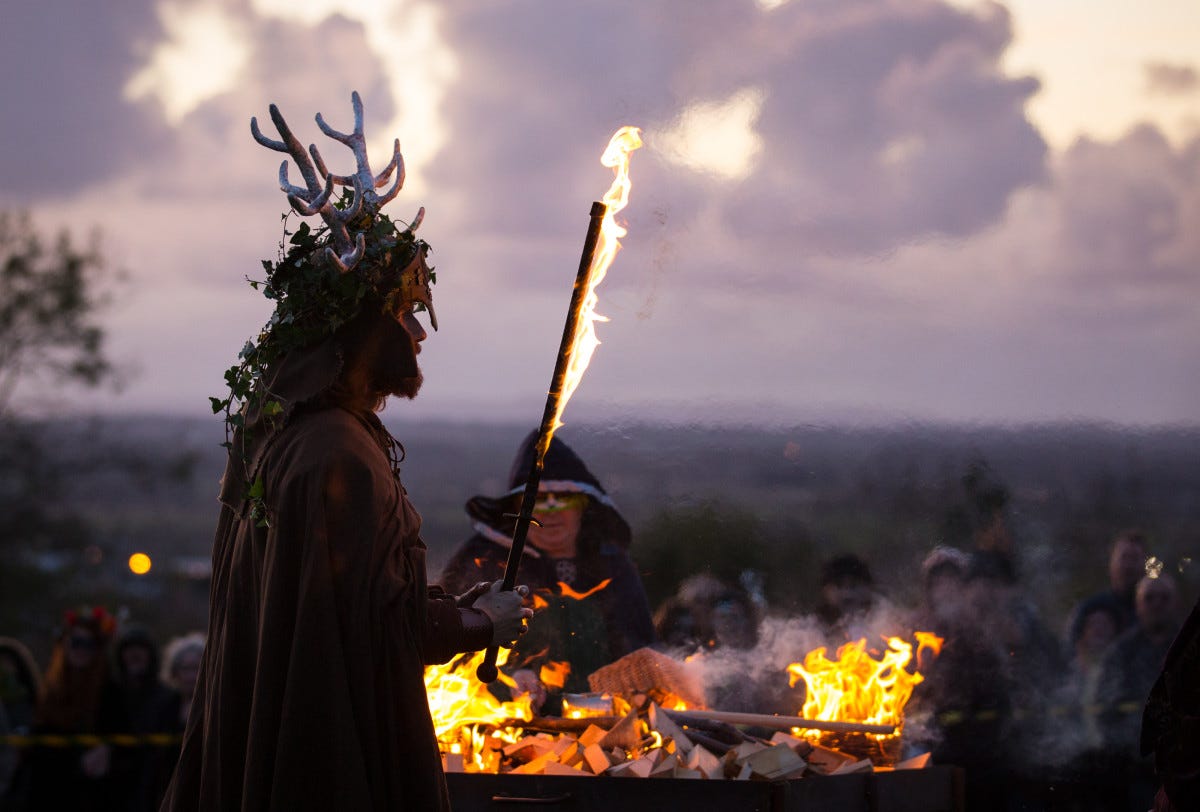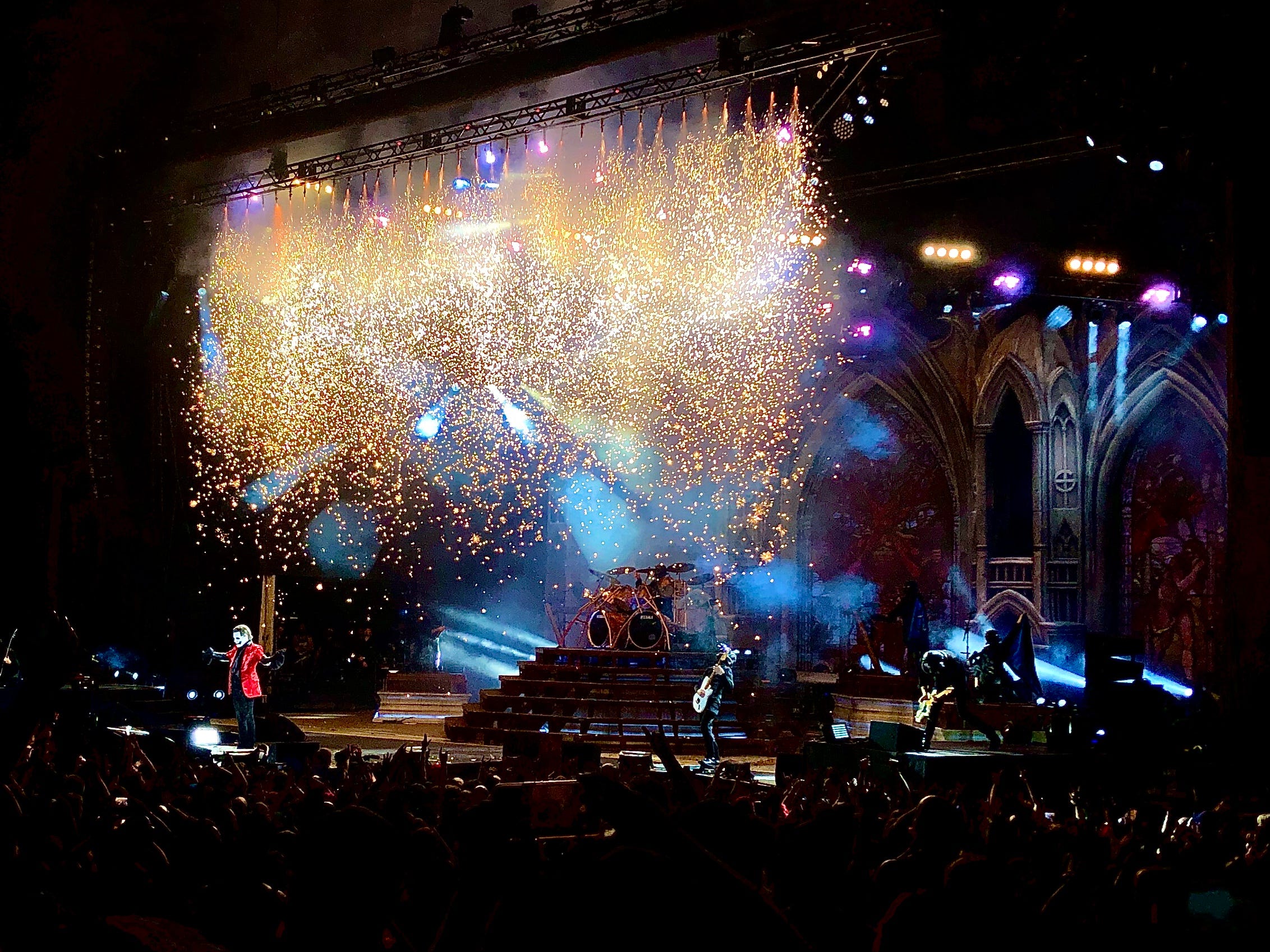Hello Interactors,
Trick-or-treat! It’s that time of year for Americans, and a growing population worldwide, to dawn a favorite costume and consume copious amounts of candy. It’s also a time for kids to parade for treats and for adults to decorate with ghoulish goblins, ghosts, and other frightful festoons. And excuse to cosplay without criticism.
Americans will spend an ungodly amount of money on this conspicuous occasion. Like most holidays in America, it’s a chance to fire up the capitalist contraption and watch money burn like a Halloween bonfire. But why? How did this holiday emerge and what does it all really mean?
Let’s find out.
CANDY, COSTUMES, AND CONTESTATIONS
I once handed out toothpaste to trick-or-treaters at Halloween. Trick your teeth. My wife’s dad was a dentist and we ended up with a box of toothpaste samples. Realizing we forgot to buy candy to hand out at Halloween, we poured the box of samples into a bowl. Kids loved it, and so did their teeth.
Some parents giggled, many groaned, and some thought it was downright mean. Realizing kids will happily take just about anything from the bowl, some years we’ve even opted for pencils, erasers, and stickers. We’re so mean.
But let’s face it, Halloween, in its modern form, is mostly about candy and costumes. The National Retail Federation (NRF) estimates 68% of Americans will spend a total of $3.6 billion on candy handouts this Halloween. That’s up from $3.1 billion last year. Burp.
Nearly three quarters of the country are expected to buy decorations to the tune of $3.9 billion dollars. The percentage of folks intent on buying costumes have hit an all-time NRF high of 69%, up from 67% last year, amounting to $4.1 billion dollars. All told, they project the average American Halloweener will spend around $108 this year. It’s all been climbing since Covid. Either we need sugar to sooth each other, or costumes to excuse each other. Or both.
Their data suggests those aged 25–44 are the most eager to spend, claiming social media inspires early costume and decoration ideas and decisions. Adult spending on themselves and their pets dwarfs spending on kid costumes accounting for nearly three of the four billion dollars in total spend…and climbing. Adult spending increased a whopping 18% from a year ago.
The NRF says to expect a lot of Spiderman and princess costumes on kids, pets as pumpkins, and a variety of adult witches, ghosts, and vampires. And Barbie. Lots of Barbie. It seems trendy pop culture is challenging the traditional spooky gothic culture Hallows Eve is known for. Though there are some interpretations of history that suggest Halloween really was more of a moment of merriment among the masses than some pagan spiritual spook fest.
A quick search on the history of Halloween and you’ll quickly learn it comes from Ireland via a Celtic festival called Samhein (pronounced “sow-win”). Irish immigrants then brought it to America in the 1800s and here we are. Searching on Samhein will reveal text that says it stems from a spiritual festival by pagans — a religious celebration with imagery of mysticism and the occult where people on earth attempt connections with the dead through fire and rituals. It was believed to be the interaction of pagan people and place seeking interactions with people of another time and place.
But a more truthful approximation of historical fact reveals the story of Samhein may be a victim of what one historian calls a combination of “fakelore and folklore”. Professor Robert Davis studies religious and cultural education at the University of Glasgow as it relates to people, place, and social change. He writes that much of Irish history stems from the work of a seventeen-century historian named Geoffrey Keating.1 Davis joins a chorus of critics who argue Keating's work, while beautifully written, is mostly a form of exaggerated romantic nationalism.
Keating wrote during a time when Irish history and culture were under threat from English influence and rule. Critics believe his narratives therefore assert a particularly noble Irish identity and history, which led him to possibly embellish or reinterpret certain historical events or figures. Keating was also a Catholic priest, which influenced his historical interpretations. Including the notion that these ancient Irish clans and respective nobility were Catholic.
His intertwining of religious and secular perspectives is seen as a reflection of Keating's worldview. But it doesn’t always live up to academic scrutiny expected from histography. But because Keating was also a poet and had a compelling command of the Irish language, his writing was accessible and enjoyable. This further endeared him to readers while also allowing his work to endure. His influence is present today despite his critics, as evidence by the dominant narrative surrounding Sanhein found in history books and online.

Keating’s recalling of this autumnal event is unique in its reference to mythological religiosity by pagans of the past. There are legal and agricultural Irish texts and calendars that indeed show there was a festival on or around November 1, just no mention of any worship for the dead, paranormal occurrences from the ‘underworld’, or the observance of a celebratory ‘Eve’ stemming from some form of ancient pre-Christian calendar. These pagan accounts are commonly associated with Sanhein and thus Halloween and appear to all lead to Keating himself. Meanwhile, his interpretation has since branched into every account of history paraded as historical fact.
Historical records from neighboring regions like Wales and Scotland also show no evidence of Halloween-like celebrations occurring, apart from those areas populated by Irish immigrants! But like in Ireland, there were indeed agrarian celebrations commemorating the end of the harvest season. And those included autumnal festivities we may recognize today as Halloween, Thanksgiving, Christmas, and even New Year.
SONGS, SPIRITS, AND THE SOUL OF TRICK-OR-TREATING
Keating wasn’t alone in weaving pagan lore into Christian mythology and dogma. He probably picked up from the Christian bible. The Roman Catholic Church, especially in its earliest centuries, borrowed heavily from the imagery and ceremony of pagan folklore and fakelore to lure non-Christians into their faith. This summer our family went to see the Swedish rock band, Ghost, who’s leader, Tobias Forge, leverages this history, and its imagery, on stage and in costume to call attention to this appropriation. It’s a presentation, I might add, fit for Broadway.

Indeed, Pope Gregory III of the Roman Catholic Church, established All Saints Days as November 1st in the 8th Century and eventually made its way to the British Isles. Also known as All Hallows Day. The word “Hallow” stems from the Old English word “hālig” which means “holy”. The celebration before All Hallows Days, on October 31st, or on the “evening” or “even” — as commonly shortened in Old English, which could also be written and pronounced as ‘e’en’ — became known as Halloween.
Halloween most likely originates from the rotation of the earth and the shift in seasons. Fall has always been a time of collecting what food you can, sharing any abundance with less fortunate community members, and mourning the loss of organic life that relies on photosynthesis. A requirement for keeping animals like us alive. It’s a time to take stock, hunker down, and hope you survive the impending harsh winter.
It was also a convenient time to take spoiled and fermented fruits to make wine and be merry. Fields and piles of debris were set ablaze in preparation for next season. Migrant field workers, with no rows to plough or crops to pick, went door to door in search of food, clothing, work, or compassion. It’s not hard to see how these rituals stemming from the rhythm of life could be woven into religious tales of death, renewal, and purifying fire — but also compassion and charity.
Professor Davis believes the best image of the history of Halloween can be resurrected by the lyrics of the songs sung in the British Isles on Halloween, Hallows Day, and even a third day of celebration less known today, All Souls Day. These songs were sung at gatherings, but also by beggars going door-to-door seeking food or gifts. It’s a tradition known as “souling”, but today many of us would recognize it as either trick or tricking, thanksgiving feast, or caroling. All three of which, are born — one way or other — out of the loss of sun in the northern hemisphere brought on by a tilting earth.

Here's one song Professor Davis offers up as representative of the spirit of Halloween.
A soul, a soul, a soul cake
Please, good missus, a soul cake
An apple, a pear, a plum or a cherry
Any good thing to make us all merry
One for Peter, two for Paul
Three of Him who made us allGod Bless the master of this house, the mistress also
And all the little children who around your table grow
Likewise your men and maidens, your cattle and your store
And all that dwells within your gates
We wish you ten times moreThe lanes are very dirty and my shoes are very thin
I’ve got a little pocket I can put a penny in
If you haven’t got a penny, a half penny will do
If you haven’t got a half penny, then God bless you.
This song reveals the fusion of the wants and needs that come with scarcity and misfortune blended with the hope and charity promised by various forms of Christianity. Professor Davis puts it best, Halloween is
“Steeped in the peculiar religious imagery of Halloween, with its refining fires, its muffled imploring voices and its traffic with the supernatural.” Together they attempt to bridge “the past, the present and the future into a momentarily inspiring alignment around the axis of hope.”
I’m reminded that where I grew up in Iowa, home to many an Irish immigrant — including one of my Grandparents — we had to tell a joke before we were given candy while out trick-or-treating. I wonder if this derives from ‘souling’?
My wife and I insist on jokes before little goblins and witches are allowed to dip into the candy bowl. How mean. Maybe this year, we’ll demand a song. Spiderman has a good soundtrack, and so does Barbie. But a song from Ghost might be most appropriate. “Hunter’s Moon” anyone? The B-side is “Halloween Kills”.
Treat or Trick? Halloween in a Globalising World. Edited by Malcolm Foley, Hugh O’Donnel. Part I: (Re)inventing Halloween: Escaping Through Flames: Halloween as a Christian Festival. Robert Davis. Cambridge Scholars Publishing. 2008.













